-
 Bitcoin
Bitcoin $105,791.3848
1.05% -
 Ethereum
Ethereum $2,518.1964
0.85% -
 Tether USDt
Tether USDt $1.0005
-0.01% -
 XRP
XRP $2.1761
0.08% -
 BNB
BNB $651.4920
0.79% -
 Solana
Solana $150.8267
0.57% -
 USDC
USDC $0.9999
0.02% -
 Dogecoin
Dogecoin $0.1833
2.10% -
 TRON
TRON $0.2826
1.88% -
 Cardano
Cardano $0.6636
-0.23% -
 Hyperliquid
Hyperliquid $34.4831
0.74% -
 Sui
Sui $3.2391
2.30% -
 Chainlink
Chainlink $13.8281
2.29% -
 Avalanche
Avalanche $20.8209
6.35% -
 UNUS SED LEO
UNUS SED LEO $9.1163
0.98% -
 Stellar
Stellar $0.2660
0.72% -
 Bitcoin Cash
Bitcoin Cash $407.9146
2.56% -
 Toncoin
Toncoin $3.1760
0.98% -
 Shiba Inu
Shiba Inu $0.0...01271
1.66% -
 Hedera
Hedera $0.1693
2.22% -
 Litecoin
Litecoin $88.3998
2.04% -
 Polkadot
Polkadot $4.0221
2.42% -
 Monero
Monero $324.6284
0.25% -
 Ethena USDe
Ethena USDe $1.0012
-0.01% -
 Bitget Token
Bitget Token $4.6620
0.63% -
 Dai
Dai $1.0002
0.04% -
 Pepe
Pepe $0.0...01143
2.95% -
 Pi
Pi $0.6409
2.92% -
 Uniswap
Uniswap $6.2723
3.23% -
 Aave
Aave $257.3068
1.83%
The gap has not been filled for three days: Should I chase the rise or wait for a retracement?
When a crypto price gap persists for three days, traders must decide whether to chase the rise or wait for a retracement, considering market trends and technical indicators.
Jun 07, 2025 at 11:00 am
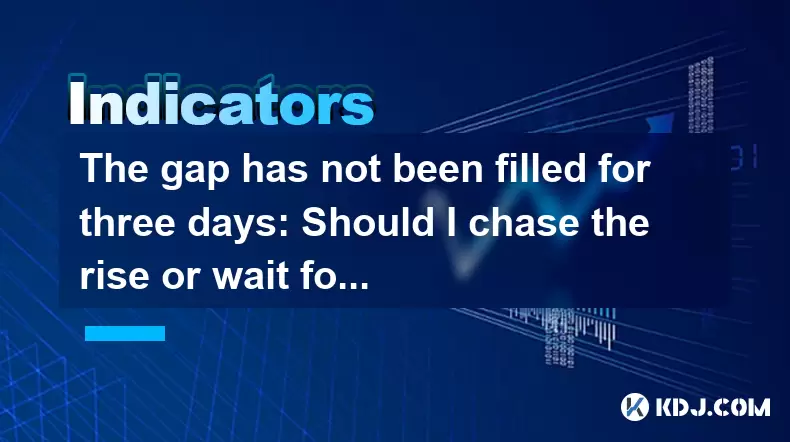
In the volatile world of cryptocurrencies, understanding market movements and making informed decisions is crucial. When a gap in the price chart remains unfilled for three days, traders often find themselves at a crossroads: should they chase the rise and buy into the current momentum, or should they wait for a potential retracement? This article delves into the considerations and strategies that can help you make a more informed decision.
Understanding Gaps in Cryptocurrency Markets
A gap in the cryptocurrency market refers to a situation where the price of an asset jumps from one level to another without any trading occurring in between. These gaps can be caused by various factors, including significant news events, sudden shifts in market sentiment, or large trades executed outside of normal trading hours. When a gap remains unfilled for three days, it suggests that the market has accepted the new price level, at least temporarily.
Gaps can be categorized into three types: breakaway gaps, runaway gaps, and exhaustion gaps. A breakaway gap often occurs at the start of a new trend, signaling a strong shift in market direction. A runaway gap, also known as a continuation gap, happens during the middle of a trend, indicating sustained momentum. An exhaustion gap appears near the end of a trend, suggesting that the current movement may be nearing its end.
Analyzing the Current Market Context
Before deciding whether to chase the rise or wait for a retracement, it's essential to analyze the current market context. Consider the following factors:
- Overall Market Trend: Is the broader market in a bullish or bearish phase? A strong bullish trend might support chasing the rise, while a bearish trend could indicate a higher likelihood of a retracement.
- Volume and Liquidity: High trading volume and liquidity can support the sustainability of the new price level. Low volume might suggest that the gap could be filled soon.
- Technical Indicators: Tools like moving averages, RSI (Relative Strength Index), and MACD (Moving Average Convergence Divergence) can provide insights into whether the market is overbought or oversold, which can influence your decision.
Chasing the Rise: Pros and Cons
Chasing the rise means buying into the current upward momentum, hoping that the price will continue to increase. Here are some pros and cons to consider:
Pros:
- Potential for Quick Gains: If the market continues its upward trajectory, you could see significant profits in a short period.
- Psychological Momentum: Being part of a rising market can boost your confidence and trading morale.
Cons:
- Higher Risk: Entering a market at a high point increases the risk of buying at the top, which could lead to losses if the price reverses.
- Emotional Trading: Chasing the rise can lead to impulsive decisions driven by fear of missing out (FOMO), which is often detrimental to long-term success.
Waiting for a Retracement: Pros and Cons
Waiting for a retracement involves holding off on buying until the price pulls back to a more favorable level. Here are the pros and cons:
Pros:
- Lower Entry Point: Buying during a retracement can provide a better entry point, potentially increasing your profit margin if the price resumes its upward trend.
- Reduced Risk: Entering the market at a lower price reduces the risk of buying at the peak and experiencing immediate losses.
Cons:
- Missed Opportunities: If the price continues to rise without a significant retracement, you could miss out on potential gains.
- Uncertainty: There's no guarantee that a retracement will occur, and waiting could result in prolonged indecision.
Strategies for Chasing the Rise
If you decide to chase the rise, consider the following strategies to manage your risk:
- Set Stop-Loss Orders: Use stop-loss orders to limit potential losses if the market reverses. Place the stop-loss just below a key support level or a certain percentage below your entry price.
- Use Technical Analysis: Look for confirmation signals from technical indicators. For example, if the RSI is not in overbought territory and the MACD shows bullish momentum, it might support your decision to chase the rise.
- Diversify Your Portfolio: Spread your investments across different assets to reduce the impact of any single trade going against you.
Strategies for Waiting for a Retracement
If you choose to wait for a retracement, here are some strategies to help you identify the right entry point:
- Identify Support Levels: Use technical analysis to identify key support levels where the price might find a bottom. These levels can be based on historical data, Fibonacci retracement levels, or moving averages.
- Monitor Volume: A retracement accompanied by high volume could indicate a strong buying interest at the lower price, increasing the likelihood of a subsequent rise.
- Set Price Alerts: Use price alert tools to notify you when the price reaches a level you consider a good entry point. This can help you stay informed without constantly monitoring the market.
Making the Decision
Ultimately, the decision to chase the rise or wait for a retracement depends on your risk tolerance, trading strategy, and market analysis. It's important to align your actions with your overall trading goals and to remain disciplined in your approach.
Consider using a demo account to practice your strategy without risking real money. This can help you gain confidence and refine your approach before committing to live trades.
Frequently Asked Questions
Q: How can I determine if a gap is likely to be filled?
A: To determine if a gap is likely to be filled, consider the following:
- Volume Analysis: If the volume during the gap is low, it might suggest that the gap could be filled soon. High volume, on the other hand, indicates strong market acceptance of the new price level.
- Technical Indicators: Use indicators like the RSI and MACD to assess whether the market is overbought or oversold. An overbought market might be more likely to see a retracement.
- Market News: Check for any significant news that might have caused the gap. If the news is temporary, the gap might be filled once the market digests the information.
Q: What are some common mistakes traders make when dealing with gaps?
A: Common mistakes include:
- Chasing the Rise Without Analysis: Entering the market impulsively without analyzing the broader context and technical indicators.
- Ignoring Risk Management: Failing to set stop-loss orders or manage position sizes, leading to significant losses if the market moves against them.
- Overtrading: Attempting to trade every gap without a clear strategy, which can lead to emotional and financial exhaustion.
Q: How can I improve my decision-making process when dealing with gaps?
A: To improve your decision-making process:
- Develop a Trading Plan: Create a detailed plan that outlines your entry and exit strategies, risk management rules, and criteria for chasing the rise or waiting for a retracement.
- Backtest Your Strategy: Use historical data to backtest your approach and see how it would have performed in different market conditions.
- Stay Informed: Keep up with market news and developments that could influence cryptocurrency prices. Use reliable sources and stay updated on economic indicators and industry trends.
Q: Are there specific cryptocurrencies that are more prone to gaps?
A: Yes, certain cryptocurrencies are more prone to gaps due to their volatility and liquidity. For example:
- Low-Cap Altcoins: These often experience larger gaps due to their lower liquidity and higher susceptibility to sudden price movements.
- Newly Listed Tokens: Tokens that have recently been listed on exchanges can see significant gaps as they attract new investors and traders.
- Highly Speculative Assets: Cryptocurrencies with high speculation and hype, like those associated with major projects or events, can also experience frequent gaps.
Disclaimer:info@kdj.com
The information provided is not trading advice. kdj.com does not assume any responsibility for any investments made based on the information provided in this article. Cryptocurrencies are highly volatile and it is highly recommended that you invest with caution after thorough research!
If you believe that the content used on this website infringes your copyright, please contact us immediately (info@kdj.com) and we will delete it promptly.
- Altcoins Have Been Showing Signs of Life
- 2025-06-08 02:30:12
- Ethereum's Pectra Upgrade goes live on May 7, and the crypto community can't seem to keep calm.
- 2025-06-08 02:30:12
- Qubetics: Non-Custodial Multi-Chain Wallet Infrastructure Built for the Future
- 2025-06-08 02:25:14
- How to Know Which Crypto to Invest in When Every Other Coin Is Screaming for Your Attention?
- 2025-06-08 02:25:14
- New Hampshire Has Passed a Bill to Allow the State to Hold Bitcoin as an Official Reserve Asset
- 2025-06-08 02:20:17
- Bitcoin Trader Who Made $30 Million On DOGE Predicts 6,000% Surge For This $0.0000002 AI Token – Get 80% Bonus Tokens
- 2025-06-08 02:20:17
Related knowledge
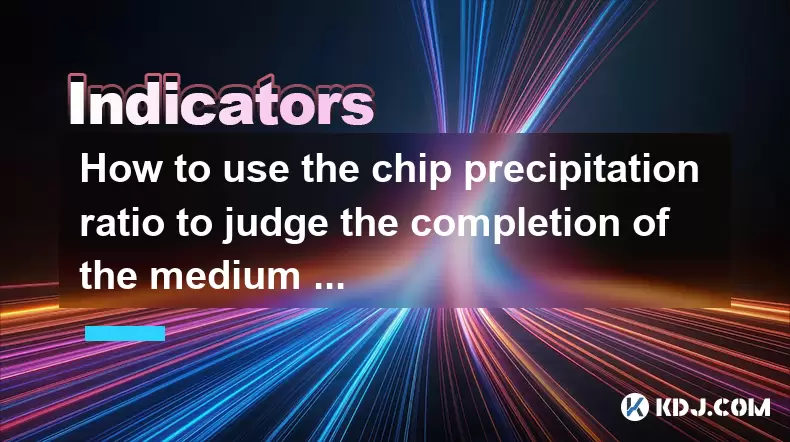
How to use the chip precipitation ratio to judge the completion of the medium and long-term bottom construction?
Jun 04,2025 at 03:36am
The chip precipitation ratio is a crucial metric used by investors to assess the accumulation of chips (or shares) at different price levels over time. This ratio helps in understanding the distribution of chips and can be a powerful tool for determining the completion of medium and long-term bottom construction in the cryptocurrency market. By analyzin...
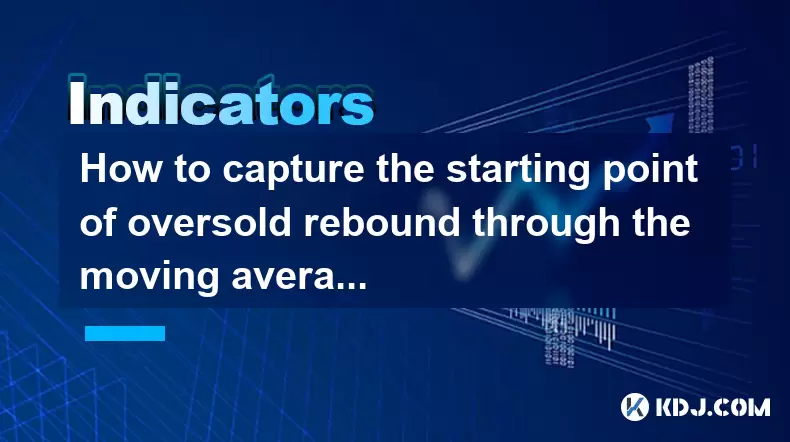
How to capture the starting point of oversold rebound through the moving average gravity reversal strategy?
Jun 04,2025 at 01:01pm
The moving average gravity reversal strategy is a sophisticated approach used by traders to identify potential entry points for buying cryptocurrencies when they are considered oversold. This strategy leverages the concept of moving averages to pinpoint moments when a cryptocurrency might be poised for a rebound. In this article, we will delve into the ...
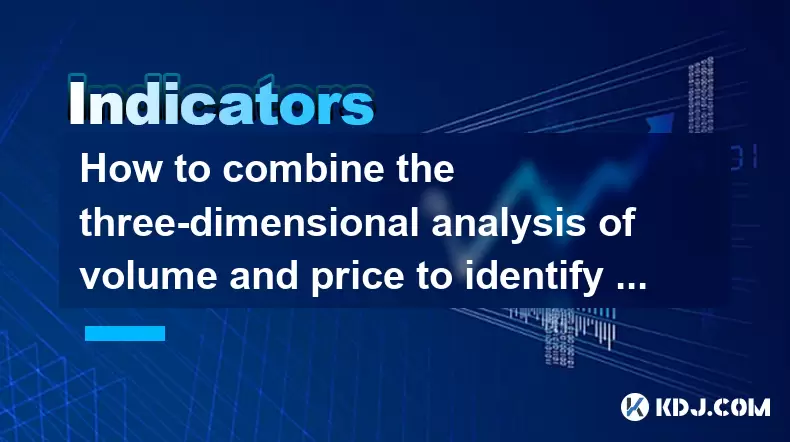
How to combine the three-dimensional analysis of volume and price to identify the golden buying point of breakthrough and retracement?
Jun 03,2025 at 11:42pm
In the dynamic world of cryptocurrencies, identifying the optimal buying points is crucial for maximizing profits and minimizing risks. One effective method to achieve this is by combining three-dimensional analysis of volume and price to pinpoint the golden buying points during breakouts and retracements. This article will delve into how to use this ap...
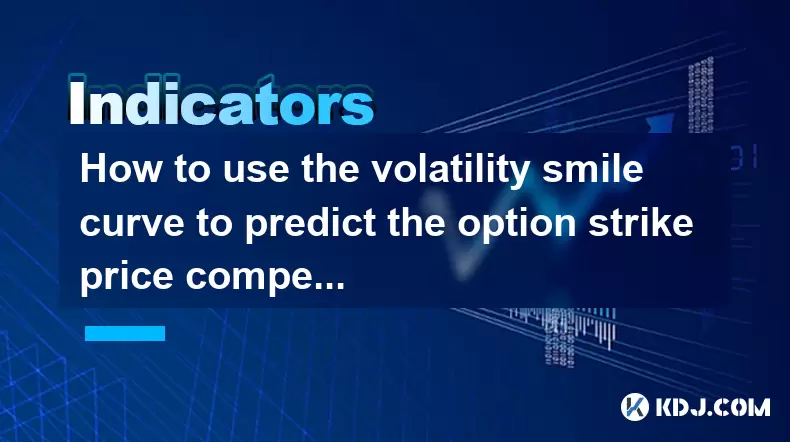
How to use the volatility smile curve to predict the option strike price competition area?
Jun 06,2025 at 01:01pm
The volatility smile curve is a graphical representation that shows the implied volatility of options across different strike prices for a given expiration date. It is called a 'smile' because the curve often takes the shape of a smile, with higher implied volatilities for options that are deep in-the-money or deep out-of-the-money, and lower implied vo...
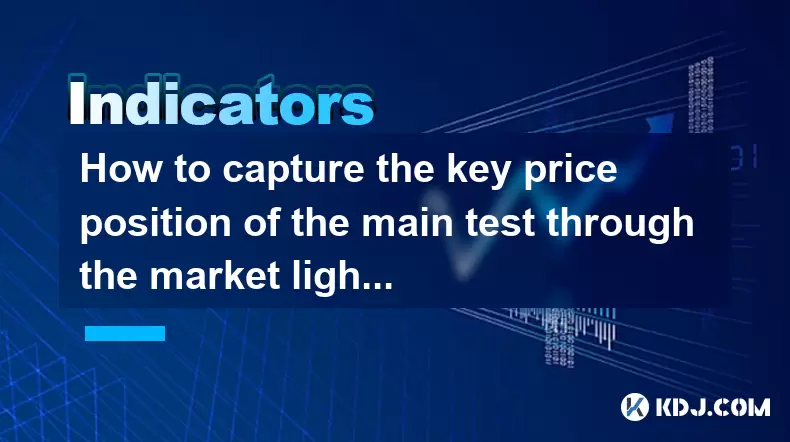
How to capture the key price position of the main test through the market lightning chart?
Jun 02,2025 at 06:07pm
Introduction to Market Lightning ChartThe market lightning chart is a powerful tool used by cryptocurrency traders to visualize price movements and identify key price positions. This chart type provides a detailed view of market activity, allowing traders to spot trends, reversals, and other significant price levels quickly. By understanding how to use ...
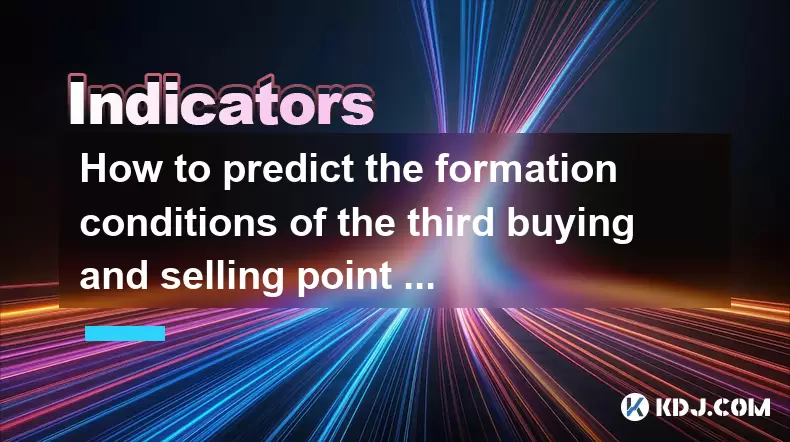
How to predict the formation conditions of the third buying and selling point in combination with the extension of the central axis of the Chaos Theory?
Jun 08,2025 at 12:42am
The concept of predicting the formation conditions of the third buying and selling point in the cryptocurrency market by combining the extension of the central axis of the Chaos Theory is an advanced analytical technique. This method involves understanding the chaotic nature of price movements and using it to identify key moments for trading. In this ar...

How to use the chip precipitation ratio to judge the completion of the medium and long-term bottom construction?
Jun 04,2025 at 03:36am
The chip precipitation ratio is a crucial metric used by investors to assess the accumulation of chips (or shares) at different price levels over time. This ratio helps in understanding the distribution of chips and can be a powerful tool for determining the completion of medium and long-term bottom construction in the cryptocurrency market. By analyzin...

How to capture the starting point of oversold rebound through the moving average gravity reversal strategy?
Jun 04,2025 at 01:01pm
The moving average gravity reversal strategy is a sophisticated approach used by traders to identify potential entry points for buying cryptocurrencies when they are considered oversold. This strategy leverages the concept of moving averages to pinpoint moments when a cryptocurrency might be poised for a rebound. In this article, we will delve into the ...

How to combine the three-dimensional analysis of volume and price to identify the golden buying point of breakthrough and retracement?
Jun 03,2025 at 11:42pm
In the dynamic world of cryptocurrencies, identifying the optimal buying points is crucial for maximizing profits and minimizing risks. One effective method to achieve this is by combining three-dimensional analysis of volume and price to pinpoint the golden buying points during breakouts and retracements. This article will delve into how to use this ap...

How to use the volatility smile curve to predict the option strike price competition area?
Jun 06,2025 at 01:01pm
The volatility smile curve is a graphical representation that shows the implied volatility of options across different strike prices for a given expiration date. It is called a 'smile' because the curve often takes the shape of a smile, with higher implied volatilities for options that are deep in-the-money or deep out-of-the-money, and lower implied vo...

How to capture the key price position of the main test through the market lightning chart?
Jun 02,2025 at 06:07pm
Introduction to Market Lightning ChartThe market lightning chart is a powerful tool used by cryptocurrency traders to visualize price movements and identify key price positions. This chart type provides a detailed view of market activity, allowing traders to spot trends, reversals, and other significant price levels quickly. By understanding how to use ...

How to predict the formation conditions of the third buying and selling point in combination with the extension of the central axis of the Chaos Theory?
Jun 08,2025 at 12:42am
The concept of predicting the formation conditions of the third buying and selling point in the cryptocurrency market by combining the extension of the central axis of the Chaos Theory is an advanced analytical technique. This method involves understanding the chaotic nature of price movements and using it to identify key moments for trading. In this ar...
See all articles

























































































